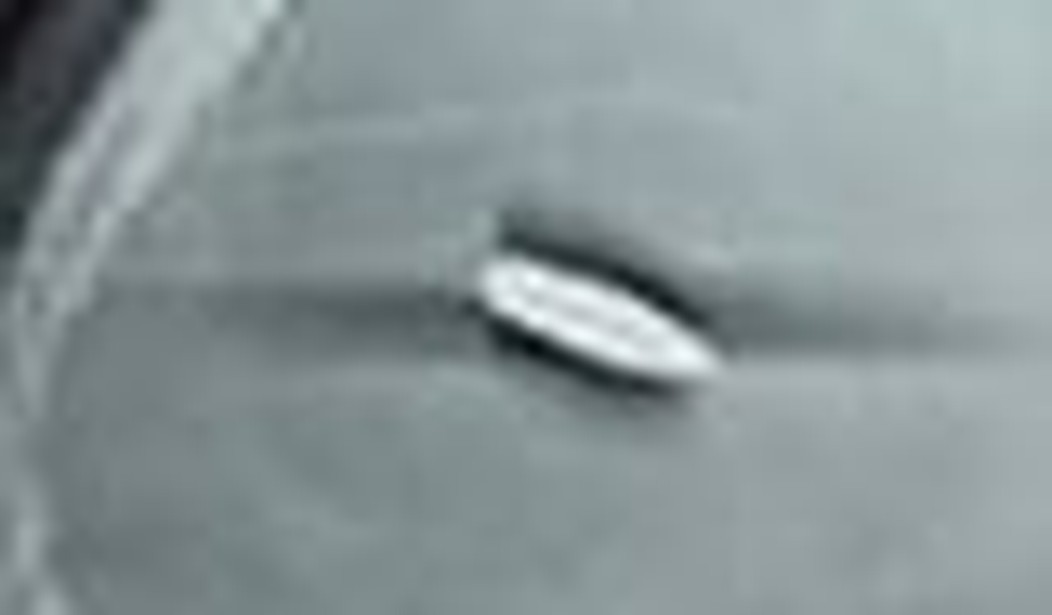An Israeli human rights group is calling for an investigation into the deaths of two Palestinians who died as a results of wounds they sustained during a riot in Nablus. Israeli forces claim they fired rubber-coated bullets in an attempt to disperse a violent crowd. But B’Tselem claims that an X-ray of the skull of Osayed Qadus clearly shows a regular rifle bullet in his head. And a claim that live bullets were fired at Palestinian protesters is nothing more or less than an accusation of attempted murder.
Indeed, the image released to the media does seem to show what may be a bullet in what is purported to be the skull of Osayed Qadus. Unfortunately for B’Tselem and for the credibility of the Palestinian doctors at Nablus Specialty Hospital, the identity of who put the bullet in Qadus’ head is very much in doubt.
Almost certainly, the bullet depicted in the X-ray did not come from an Israeli rifle.
To understand the problem with B’Tselem’s claim, it helps to have an understanding of both the rubber-coated steel projectiles used as less-lethal weapons by Israel and the very deadly bullets used to kill by armed forces in both sides of the ongoing conflict.
It would be very difficult, if not impossible, for Israeli soldiers to accidentally fire live bullets instead of rubber-coated projectiles, because the rubber-coated projectiles are not fired down the barrel like regular bullets. Instead, the round or oblong projectiles are housed in an adaptor affixed to the end of the barrel, where the expanding gases of blanks fired by the gun propels them downrange.
While coated in rubber, these projectiles do have the power to kill at close range, and Israeli forces have standing orders not to fire them inside 40 meters. The IDF fire in this incident is reported to have occurred at 70 meters.
The common small arms caliber used by the Israel Defense Forces is the same 5.56mm NATO cartridge used by most Western nations, including the United States. The standard 62-grain SS109 cartridge used by Israeli forces has a somewhat checkered reputation when used in M4 carbines, due to the lower velocities the bullet can attain in the short 14.5″ barrel. While the cartridge tends to tumble and fragment at the higher velocities attained in 20″ M16 barrels, the short barrel and lower velocity of the M4 means that the cartridge doesn’t tumble or fragment as readily, and instead often punctures straight through a human-sized target.
If you look at the X-ray, however, you do not see what you would expect to find in a 5.56mm bullet fired at relatively close range from either of these weapons. There is no catastrophic fragmentation, as you would expect to find from a SS109 bullet fired by an M-16 at this range. Nor is there the through-and-through wound one might expect from an M-4 punching through the front of the skull and out the rear.
Instead, we see the profile of a bullet that appears to be nearly perfectly intact though rotated nearly 180 degrees, with the base of the bullet near the back of the skull and the point of the bullet towards the front. This is very unlikely behavior in a 5.56mm bullet, as a bullet having significant velocity to tumble end-over-end will also fragment violently.
It would be useful to see the full-sized X-ray that is claimed to be that of Osayed Qadus’ skull. Unfortunately, we are reduced to looking at the larger of the small media versions posted online, including this one by Ynetnews.
A larger, high resolution version of the X-ray may go a long way towards supporting or denying the contention that I am about to make.
Based upon the relative size differences between the basic types of weapons in this conflict, it is often fairly easy to tell one type of bullet from another, even in a grainy, low-quality image. Unless Osayed Qadus was cursed with having an unusually small skull, the bullet shown would seem to be too large to be an Israeli bullet. Neither the size nor the atypical behavior of the bullet makes it believable that the bullet we see in this image was fired from an Israeli weapon.
This opens up a host of issues.
If the bullet is not a 62-grain 5.56mm NATO bullet fired from an Israeli weapon, then where did it come from? The most logical and likely alternative is that the bullet shown is the 123-grain 7.62mm bullet fired by the AK-47, the weapon preferred by Palestinian forces: legal, criminal, and terrorist.
But even claiming this bullet was fired by an AK-47 is very suspect. Even more so than the 5.56mm round fired at low velocity, the 7.62×39 round had developed a reputation for boring straight through a target without fragmenting or tumbling. Nor is it likely that a 7.62mm round fired at short range would penetrate only partially through the skull.
If we must eliminate Israeli weapons from being the cause of this wound, and find it problematic to suggest that an AK-47 was used at close range, then what alternatives are we left with?
As bizarre as it may sound, the most logical deduction that can be made is that the bullet was placed in or under Osayed Qadus’ skull by hand for purposes of creating a fraudulent X-ray, or that this X-ray is not of Qadus at all, but of someone else shot by an AK-47 at a much longer range.
A higher-resolution version of the X-ray might help us determine if this bullet was ever fired, but we do know one thing with a fair degree of certainty. This X-ray is not evidence that Israeli troops fired live rounds at unarmed Palestinians.
If anything, it exonerates the IDF.
What it appears to be is evidence of a “professional” media all too willing to accept fraud at face value.









Join the conversation as a VIP Member